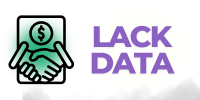The most effective marketing and content strategies don’t start with your product—they start with your customer’s pain. By using a problem/solution approach, you instantly connect with your audience, show empathy, and position your offering as the ideal fix.
Why Problem-Solution Content Works
People don’t buy products or services—they buy solutions to their phone number list problems. Whether it’s wasted time, low conversions, or lack of clarity, identifying a specific pain point immediately grabs attention.
Pain Creates Urgency
When someone sees a problem they’re currently facing described in your content, it feels personal. It triggers the thought: “That’s exactly what I’m dealing with.” This creates emotional investment and increases the likelihood they’ll keep reading.
Solution – Lead With the Problem, Follow With the Fix
Start your content or pitch by stating a common, relatable challenge. Then pivot to how your solution addresses that challenge in a concrete, measurable way.
How to Identify and Frame Your Audience’s Pain Points
Great problem-solution content is based on real customer challenges, not assumptions. Use surveys, reviews, and conversations to uncover what your audience truly struggles with.
Speak Their Language
Use the exact words your clients use when describing their issues. This builds trust and proves you understand their needs.
Real-World Example
Problem: “I’m getting traffic to my website, but no one is converting.”
Solution: “Our landing page optimization service rewrites your copy and layout to boost conversion rates by 30%—guaranteed.”
Presenting Your Solution the Right Way
After presenting the problem, offer your solution clearly boost low conversion rates with direct phone data. and confidently. Don’t oversell—just show how your product or service solves the issue with real value.
Include Social Proof and Results
Support your solution with testimonials, case studies, or stats that prove it works. People trust outcomes, not just promises.
Make Action Easy
End with a direct call-to-action. Whethe email data it’s booking a demo, downloading a guide, or scheduling a free consult, guide the reader to the next step.
The problem/solution framework is one of the most effective ways to build empathy and trust while showing value. Address your audience’s pain head-on—and then offer the fix they’ve been searching for.
